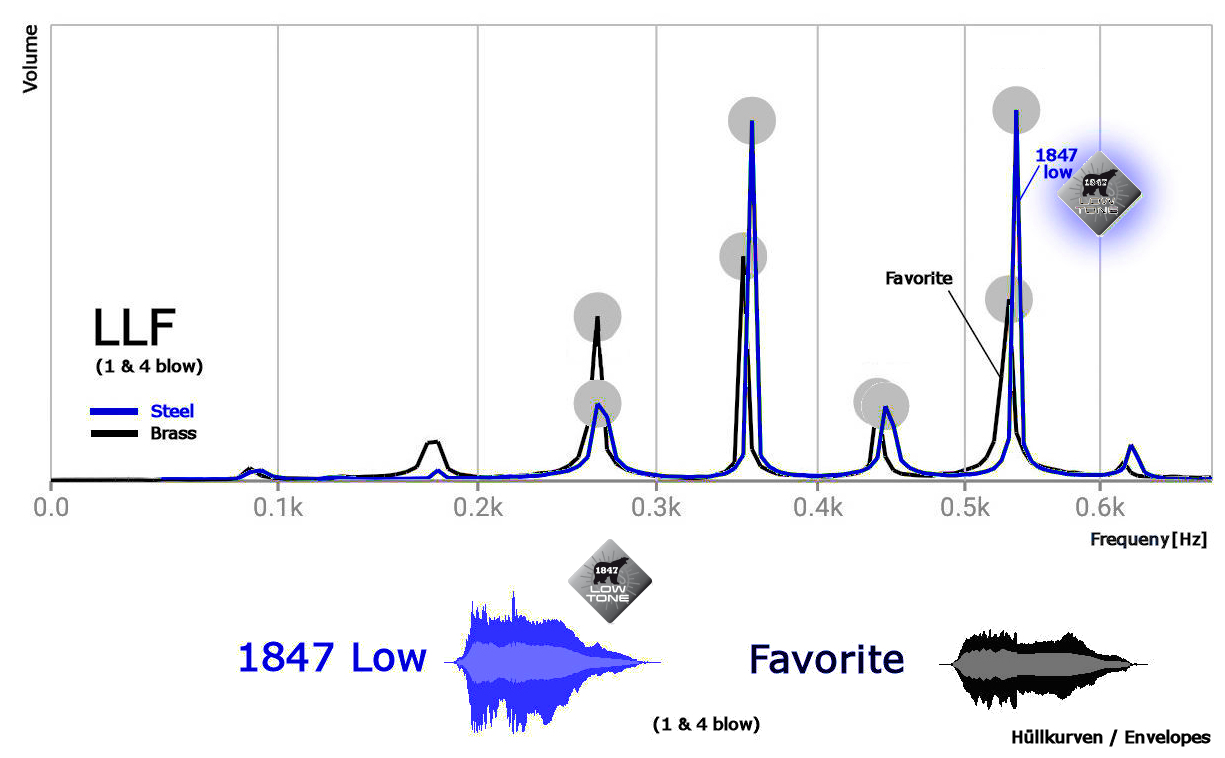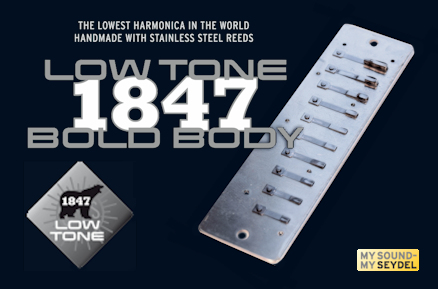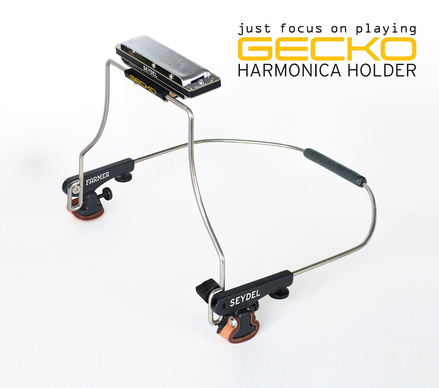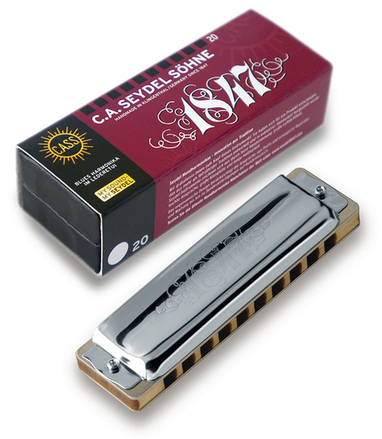1847 CLASSIC Low
| Tips | |
| Video | |
| 3D View | |
| Sound example |
|
| Tone table |






SEYDEL's Next-Generation Low-Harmonicas: the lowest sounding Blues harmonica in the world - with new Baritone design & Stainless Steel reeds.
The 1847 CLASSIC is now available in super-low tunings, redesigned to include a 20% thicker comb and raised coverplates. Available keys range from LF# (low F sharp) down to LLE (double-low E). This innovation expands our 1847 line of Stainless Steel reed harmonicas to include the extreme bass range.
The double-low models (LL) are tuned two octaves lower than standard, making SEYDEL’s 1847 LLE the lowest tuned diatonic harmonica worldwide.
In comparison to the 'standard tuned' models, low-tuned harmonicas offer a very sonoric, slightly softer and unobtrusive sound making them an excellent choice for accompaniment (chords or bass lines) as well as for soloing. Their sound is similar to that of a tenor saxophone, a trombone, or even a tuba, especially if played amplified. This considerably extends the range of application and opens many new possibilities for harmonica players.
To get the desired sound out of the low-tuned models the notes need more space. The resonance chamber, increased by the 20% thicker comb (sealed walnut) and the higher coverplates of the new 1847 Low models, help to produce a fatter and louder sound. Special valves ensure very good airtightness even in the extrem low range.
This design change has a positive impact on sonority and tonal control of the 1847 Low models. While the player is animated to open his or her vocal tract slightly more to increase the resonance chamber, the improvements in design, such as the thicker comb aid in creating the larger resonance chamber, yielding a superior, low sound. The sound becomes fuller and more voluminous and the instrument can be played with a better response.
Thanks to the raised coverplates rattling reed noise is a thing of the past and players get a greater sound projection towards the audience through the wide-opened back of the instrument.
>here you will find the 1847 CLASSIC in the standard keys ranging from G to F#
|
Get started with SEYDEL:
Each instrument from the Blues Series comes with an access code for the SEYDEL SOCIETY. You will get free access to our beginner video workshop and lots of free playalong tracks to play along with.
|
The 1847 CLASSIC is now available in super-low tunings, redesigned to include a 20% thicker comb and raised coverplates. Available keys range from LF# (low F sharp) down to LLE (double-low E). This innovation expands our 1847 line of Stainless Steel reed harmonicas to include the extreme bass range.
The double-low models (LL) are tuned two octaves lower than standard, making SEYDEL’s 1847 LLE the lowest tuned diatonic harmonica worldwide.
In comparison to the 'standard tuned' models, low-tuned harmonicas offer a very sonoric, slightly softer and unobtrusive sound making them an excellent choice for accompaniment (chords or bass lines) as well as for soloing. Their sound is similar to that of a tenor saxophone, a trombone, or even a tuba, especially if played amplified. This considerably extends the range of application and opens many new possibilities for harmonica players.
To get the desired sound out of the low-tuned models the notes need more space. The resonance chamber, increased by the 20% thicker comb (sealed walnut) and the higher coverplates of the new 1847 Low models, help to produce a fatter and louder sound. Special valves ensure very good airtightness even in the extrem low range.
This design change has a positive impact on sonority and tonal control of the 1847 Low models. While the player is animated to open his or her vocal tract slightly more to increase the resonance chamber, the improvements in design, such as the thicker comb aid in creating the larger resonance chamber, yielding a superior, low sound. The sound becomes fuller and more voluminous and the instrument can be played with a better response.
Thanks to the raised coverplates rattling reed noise is a thing of the past and players get a greater sound projection towards the audience through the wide-opened back of the instrument.
>here you will find the 1847 CLASSIC in the standard keys ranging from G to F#
|
Get started with SEYDEL:
Each instrument from the Blues Series comes with an access code for the SEYDEL SOCIETY. You will get free access to our beginner video workshop and lots of free playalong tracks to play along with.
|
















